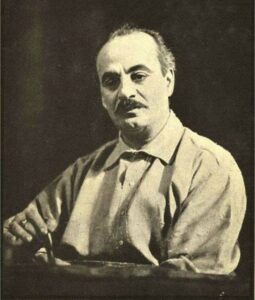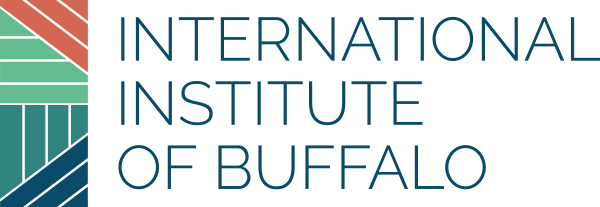
In honor of Arab American Heritage Month, we continue to recognize the economic, cultural, political, and social contributions of notable immigrants and refugees who’ve helped shape America’s vibrant tapestry. Today, we highlight Kahlil Gibran, a Lebanese-American writer, poet, and philosopher whose works have left a lasting impact on literature and human thought worldwide. Gibran’s ability to blend Eastern and Western philosophies has made him one of the most influential authors of the 20th century.
Born in 1883 in the small village of Bsharri, in what is now Lebanon, Gibran immigrated to the United States with his mother and siblings in 1895, settling in Boston. There, he quickly gained recognition as a gifted student and was encouraged by the photographer and publisher F. Holland Day. At the age of 15, he returned to Beirut to enroll at the College de la Sagesse, and subsequently moved back to Boston after the death of his sister in 1902. Shortly after, his half-brother and mother also passed away.
From 1908 to 1910, Gibran studied art at the Académie Julian in Paris, supported financially by Mary Haskell. There, he encountered political thinkers in the wake of the Young Turk Revolution. His work began to reflect a blend of Eastern mysticism, Western philosophy, and universal spiritual wisdom, often exploring the interconnectedness of all life. In 1911, his first English book, The Madman, was published, addressing the tension between societal norms and the individual’s search for personal truth.
In 1923, he published The Prophet, his best-known work. Regarded as one of the bestselling books of all time, The Prophet is celebrated for its poetic essays on themes such as love, work, freedom, pain, and the nature of human existence. Since its publication, The Prophet has never been out of print. It has been translated into over 100 languages, securing its place as one of the top ten most translated books in history.
In addition to his literary achievements, Gibran was also passionate about painting. His artwork reflects a blend of traditional Eastern symbolism and the more modern, expressive styles he encountered in Europe. One of his more famous paintings is “The Triad – Being Descending Towards the Mother Sea.”
Kahlil Gibran passed away on April 10, 1931. His powerful ideas about life, love, and the soul continue to inspire people today, living on through his literary works and visual art.
Others we are celebrating in honor of Arab American Heritage Month History Month:
2025
Dr. Huda Zogbi, geneticist who significantly advanced the understanding of neurodevelopmental and neurodegenerative diseases.
Dr. Mona Hanna, public health advocate whose research exposed the Flint water crisis
Farouk El-Baz, NASA’s Apollo Program Scientist
Ameen Rihani, we highlight Lebanese American writer and activist Ameen Rihani
